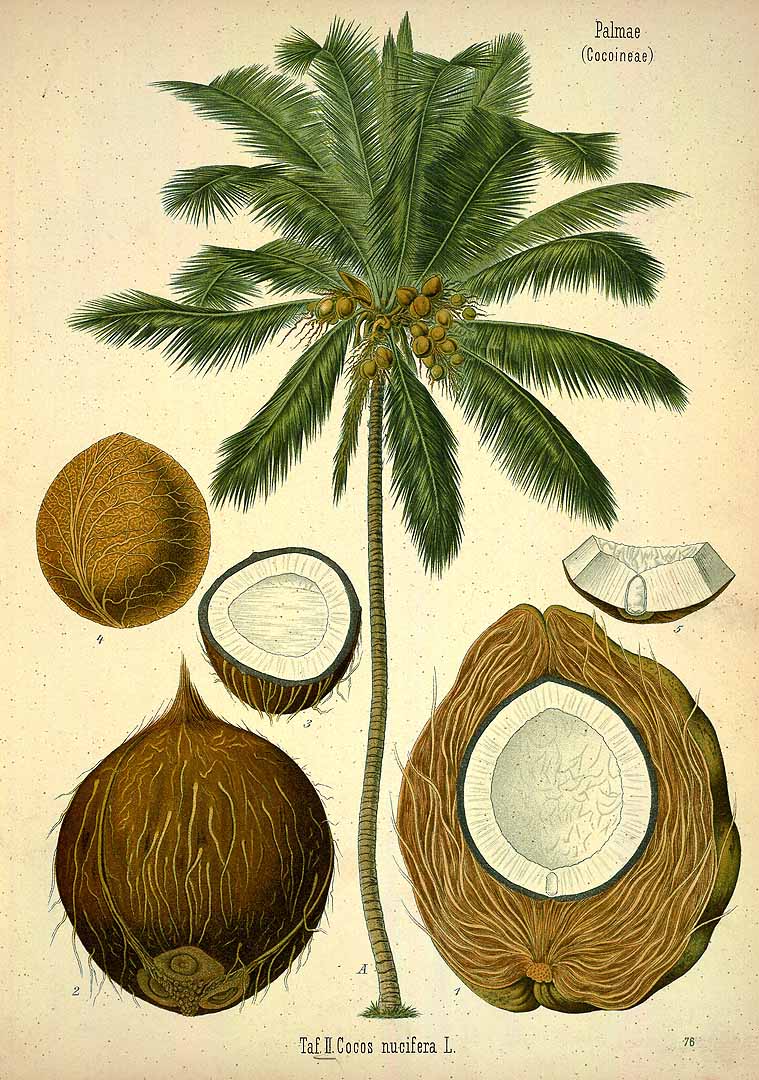! Nouveau site ici !
Vita > Plantae > Magnoliophyta > Liliopsida > Arecales >
Arecaceae > Cocos
Cocos nucifera
(Cocotier)

 | *****
| *****
Vita > Plantae > Magnoliophyta > Liliopsida > Arecales >
Arecaceae > Cocos
Cocos nucifera
(Cocotier)

10/4 (zone 10b à 11) et jusqu'à -1/-3°C avec de très fortes brûlures de gel selon awkelleys.com
Un palmier avec un tronc non ramifié. Le tronc a des cicatrices foliaires en forme d'anneau. À la base, il est gonflé et entouré d'une masse de racines. Ils atteignent environ 25 m de haut. Des variétés n... (traduction automatique)
→suite
⬀
Le  donne accès au menu
donne accès au menu (c'est votre point de repère) 😊 ;
En dessous vous avez la classification, à partir de la vie (Vita, premier rang) jusqu'à la classe au dessus de la plante, dont vous trouvez ensuite le nom scientifique/botanique (latin) puis le nom commun (français), le cas échéant ;
C'est aussi un lien vers la fiche complète (tout comme la ✖, en bas à droite, et le +, en dessous de la description) ;
Vient alors l'illustration (ou ce qui la remplace, en attendant), la comestibilité :
Et en bas
⬂



